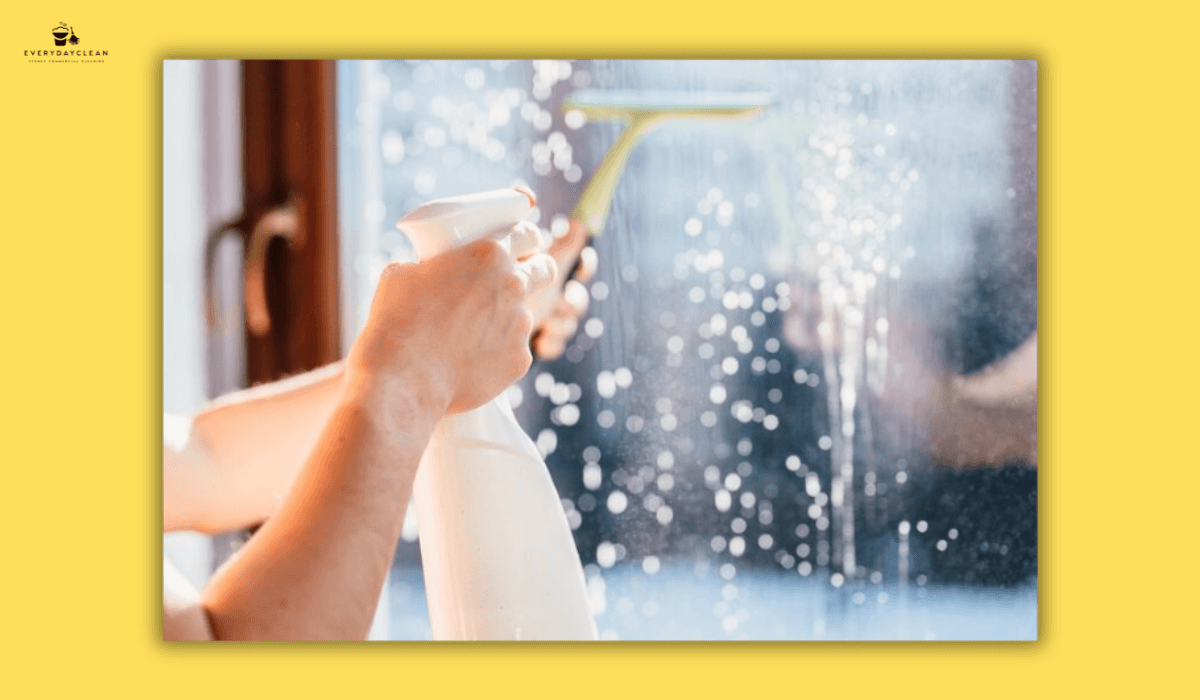Cleaning Window Tracks: 4 Easy Steps for a Sparkling Finish
To clean window tracks effectively, start with a dry-to-wet cleaning method that removes dirt before adding moisture. Begin by vacuuming or brushing away loose debris, then apply a mild cleaning solution such as a vinegar-and-water mix or a baking soda paste. Scrub the tracks thoroughly with a small brush or toothbrush to lift built-up grime, wipe the area with a microfiber cloth, and finish by drying completely to prevent mould and corrosion.
This simple sequence is used by professional cleaners across Sydney to maintain spotless, smooth-sliding windows in homes, offices, and schools. It not only enhances the window’s function but also keeps indoor air cleaner by reducing trapped dust and allergens.
Tools and Cleaning Products for the Job
Before starting, gather all your tools so you can work efficiently without spreading dirt. A prepared setup ensures each step flows seamlessly.
You’ll need:
- Vacuum with crevice tool – removes loose dirt and cobwebs from corners.
- Small brush or old toothbrush – perfect for scrubbing tight grooves.
- Microfiber cloths – one damp for cleaning, one dry for finishing.
- Spray bottle – to apply your cleaning solution evenly.
- Plastic scraper or chopstick wrapped in cloth – for compacted grime.
Best cleaning solutions:
- Vinegar and warm water (1:1) – cuts through everyday residue and mould.
- Baking soda paste (mixed with a small amount of water) – ideal for deep cleaning.
- Mild dish soap in warm water – safe for most surfaces and finishes.
Avoid harsh chemicals or abrasive pads, as they can scratch aluminium and vinyl tracks or strip paint.

Clean Window Tracks with 4-Step Guide
Each step follows a practical cleaning order designed to lift dust first, then dissolve grime, and finally protect the frame with proper drying.
Step 1: Remove Loose Debris
Before applying any liquid cleaner, it’s essential to start with dry cleaning. Open the window fully to access the entire track, then use a vacuum cleaner with a crevice attachment to remove loose dust, cobwebs, pet hair, and small debris that naturally collect in corners. This first step prevents dry dirt from turning into a muddy paste once water or a solution is added. For stubborn particles stuck in tight grooves, loosen them gently with a small brush or a wooden skewer wrapped in tissue. After brushing, vacuum the track again to ensure all fine dust is lifted. Starting with this dry-to-wet approach keeps your cleaning process efficient and prevents smearing grime across the surface.
Step 2: Apply the Cleaning Solution
After all loose dirt has been removed, apply your chosen cleaning solution evenly along the window tracks. A 1:1 vinegar-and-warm-water mixture works perfectly for general dirt and light mould, while baking soda followed by vinegar is ideal for sticky or greasy residue. Spray or pour the solution directly into the channels, making sure to coat all corners where grime builds up. Allow the mixture to sit for three to five minutes so it can dissolve mineral deposits and soften hardened dirt. The fizzing reaction between baking soda and vinegar lifts stubborn buildup naturally. Avoid over-wetting wooden frames; instead, use a damp sponge or cloth to control moisture levels while the cleaner does its job.
Step 3: Scrub and Wipe Thoroughly
Once the solution has had time to break down grime, begin scrubbing the tracks using a toothbrush or a small nylon detailing brush. Focus on corners, edges, and drainage holes where dirt often hides. Move methodically along the length of the track, using gentle circular motions to lift grime without scratching the surface. For extra precision, wrap a microfiber cloth around a thin spatula or butter knife to clean deep crevices. Wipe away loosened dirt with a damp cloth, rinsing it frequently to avoid redistributing debris. This step is where most of the visible transformation happens — tracks regain their clean metallic or vinyl finish, free from stains, sticky residue, and trapped dust.
Step 4: Rinse and Dry Completely
To finish, rinse the window tracks thoroughly to remove any leftover cleaning solution or residue. A clean, damp microfiber cloth is the safest method, but for aluminium tracks, a light spray of water works well. Make sure to dry the area immediately using a fresh towel to prevent streaks, water spots, or mould growth. Pay attention to corners and screw holes where moisture tends to collect. Once dry, apply a thin layer of
silicone-based lubricant along the cleaned channels to keep the window sliding smoothly. Avoid oil-based sprays, as they attract dust. A clean, dry, and lightly lubricated window track not only improves function but also extends the life of your window system.

Cleaning Window Tracks by Material Type
Each window frame material responds differently to moisture and cleaning solutions. Understanding these differences ensures long-term protection:
- Aluminium tracks: Use pH-neutral cleaners only. Avoid alkaline or ammonia-based products that dull the finish.
- Vinyl (uPVC) tracks: Stick with gentle soap or vinegar — never abrasive powders.
- Wooden frames: Minimise moisture. Use a lightly damp cloth and dry immediately to prevent swelling or paint damage.
If tracks are heavily soiled or mouldy, repeat the cleaning cycle twice, ensuring full drying between passes. These techniques are just as essential for larger high-rise window cleaning, where window functionality and safety go hand in hand.
Maintenance: How Often Should You Clean Window Tracks
A consistent schedule keeps windows sliding effortlessly and prevents grime build-up:
- Quick clean: Once a month, using a brush and vacuum.
- Deep clean: Every three to six months with full washing and drying.
- After storms or renovations: Clean immediately to remove grit, plaster dust, or paint specks.
In coastal suburbs or industrial zones, clean every four weeks due to higher dust and salt exposure.

FAQs About Cleaning Window Tracks
Before addressing the most common questions, it’s helpful to remember that most cleaning issues — streaks, odours, or mould — arise from incomplete drying or skipping the vacuuming step. Here are detailed answers to the most frequent concerns.
How often should window tracks be cleaned?
Window tracks should be cleaned lightly each month and deeply every few months. Frequent maintenance keeps drainage holes clear and prevents sticky grime from accumulating. In high-humidity or seaside areas, cleaning every four weeks is ideal to reduce mould and corrosion risk.
What is the best cleaner for window tracks?
A simple vinegar-and-water mixture is the best all-purpose solution for removing dirt, grease, and mildew. For deeper cleans, add baking soda to create a mild foaming action that lifts grime without scratching. Always rinse and dry thoroughly to prevent residue that attracts more dust.
Can a vacuum be used to clean window tracks?
Yes — a vacuum is the most efficient first step in the process. It removes grit and debris that could otherwise scratch or muddy the surface during wet cleaning. Use a crevice attachment or soft brush head for precise suction in narrow channels.
How can mould be removed from window tracks?
To treat mould safely, spray equal parts white vinegar and warm water along affected areas and allow it to sit for 5–10 minutes. Scrub gently with a toothbrush and wipe clean. Vinegar neutralises mould spores naturally without toxic fumes. Dry completely afterwards to prevent recurrence.
Final Thoughts on Cleaning Window Tracks
Clean window tracks protect both the appearance and function of your windows. By vacuuming first, cleaning methodically, and finishing with proper drying, you can prevent mould, dust build-up, and frame damage — ensuring your windows stay smooth, spotless, and long-lasting.
For property owners who want professional-level results without the hassle, Everyday Clean offers detailed residential and commercial window track cleaning across Sydney. Our eco-friendly methods and trained technicians guarantee streak-free, hygienic results that keep your windows sliding like new.
Author: Everyday Clean Content Team
Everyday Clean is Sydney’s trusted provider of commercial and residential cleaning services. Our licensed professionals use eco-friendly methods and advanced tools to deliver spotless, compliant results across offices, gyms, schools, and homes — as part of our wider
commercial cleaning services.



